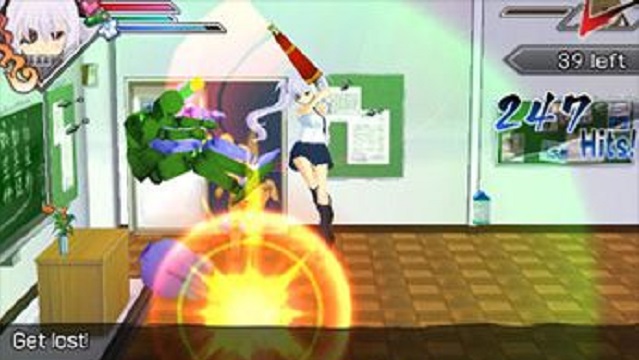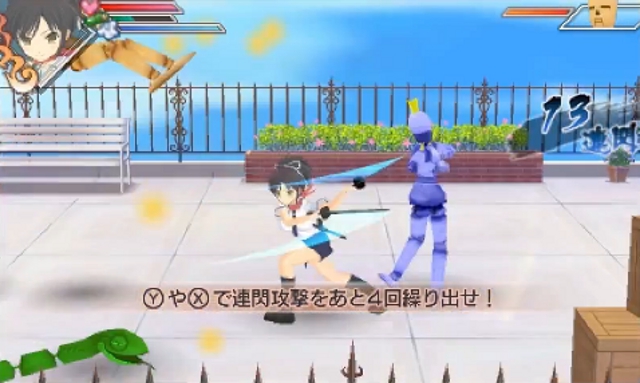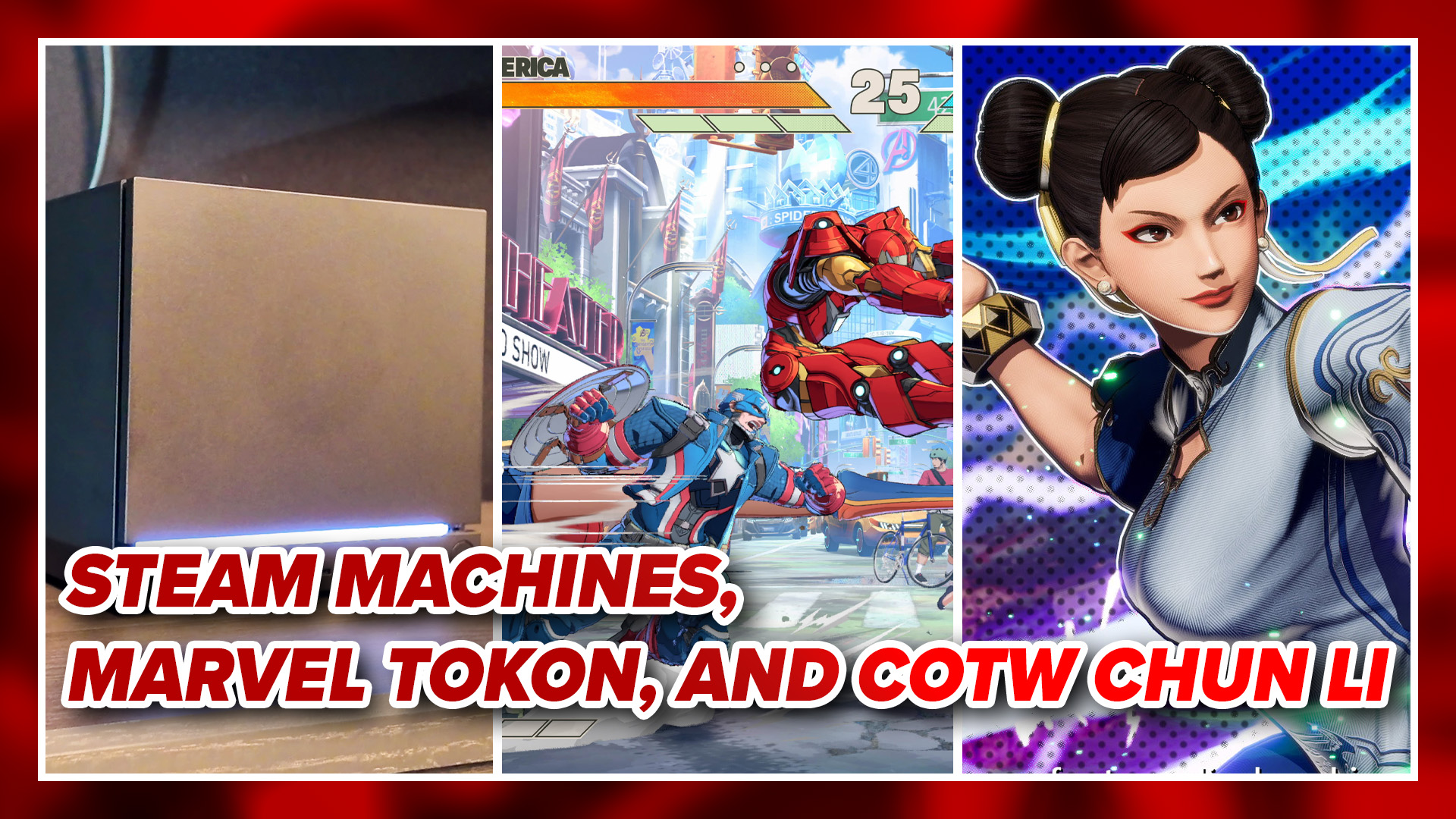Senran Kagura is not a series you go to looking for a quality story, or probably even a quality anything. If you haven’t heard about it, it’s a series about busty ninjas fighting each other so hard that they blow each others’ clothes off. It’s not exactly high concept here, and a pretty strange game to follow up my playthrough of Luxuria Superbia. Still, I likes me some beat ’em ups, so I thought I’d give Senran Kagura: Burst a spin. To be honest, it’s actually pretty good, although there are some aspects of it that can easily confuse a new player. Well, beyond the whole wardrobe removal focus, I guess.
The game’s combat system seemed pretty simple when I started. The game has a basic set of combos that alternate between heavy and strong attacks, and mixing those up will let you do different moves. There are ten different characters in the game that all draw from these same combo controls, which seems like it would let you carry your knowledge of how to play over to a new character. That would get boring pretty fast, so each character has their own particular combat style. Some use swords, some use really long swords, and some use hand-to-hand styles, and all of their attack styles work somewhat differently from each other. The same combo might still lead into an air juggle, but one girl might start spinning into a radial area attack and another might come in with a few straight kicks. The combos are all input using the same button combinations, but the move that follows might work radically differently.
This might not be all that apparent at the beginning, but that’s because you have a couple of different experience systems at work as you play. There’s a standard experience system, one that rewards you for beating enemies with more health, strength, and defense, but there are two more called Yin and Yang which grant you access to different move sets upon leveling up (and accrue experience based on your play style). The game does a poor job of explaining them unless you poke around the menus, but they both level up depending on what play style you use during each level. This is because you can choose to play the game normally (Yin), or enter a mode called ‘Frantic Mode’ (Yang) at the beginning of each stage. There are huge differences between the two, and they add quite a bit of challenge and replayability if you want to keep at the game.
The basic mode is actually the stranger mode of the two. In it, you’ll start off each level as a basic level one version of your character. This seems like a terrible idea, but all you have to do is fill up your special meter by hitting people. It fills pretty fast, and when it’s full, you can switch to Shinobi mode by hitting L. Once you’re in Shinobi mode, you gain boosts to damage and defense as well as access to all of the moves and bonuses you’ve unlocked so far. It seems a little pointless to have this mode exist instead of just having your character start the stage in this mode, but I guess the devs wanted to include yet another stripping/transforming sequence in the game because the poor girls weren’t half-naked enough already. Then again, if you’re coming to this game not expecting or specifically looking for that, you may be a little confused about what you were getting into when you bought it.
Despite increases in defense to your character in Shinobi mode, her clothing has a health meter that never gets much stronger. As you take damage, so do the girl’s clothes, and when these are shredded, you get a harsh penalty to your defense for the remainder of the stage. You still get to keep your damage bonus and all of your powers, but you get hit a fair amount harder than you normally would. Considering the game loves to throw huge gauntlets of enemies at you, especially when you’re fighting bosses, the chip damage alone is often enough to whittle your outfit down to nothing, leaving you in a vulnerable state but still able to dole out decent enough damage to finish the fight if you’re careful. I didn’t actually find things very hard even after my clothes were destroyed, though.
For those who felt like me, you could start right up in Frantic Mode in every stage. For the fan service requirement, starting up in Frantic Mode instantly puts the girl in a bikini for the remainder of the stage, meaning not having to worry about clothing meters since she’s about as close to naked as she’s going to get. Now, you deal a lot more damage than even Shinobi Mode when you’re like this, typically cutting down enemies in a few hits at most. This is beyond useful, as the game loves its hordes and this mode makes wading through them a snap. That being said, you take an astronomical amount of damage back, and in later stages many of the enemies can one-shot you. Early on it’s pretty manageable and was definitely my preferred play mode, but it’s not long before you really have to step up your game if you’re going to keep taking these poor girls out in their swim suits.
The difficulty of Frantic Mode isn’t helped by Senran Kagura: Burst‘s constantly shifting combo system. While the combo inputs don’t change over different characters, as you gain experience through Shinobi and Frantic Mode, you do gain new combo inputs. That’s normally a good thing, but many of these combos replace the combos you used to use, changing the way the game plays without really warning the player. X, X, X may have done one attack before you leveled up, but afterwards it might not do anything as it’s now only used as part of a longer combo. If you have a move set you used all the time, eventually (Until Yin and Yang levels are maxed out, at least) that move set will disappear on you when you level up, never to be seen again. It’s jarring, and unless you’ve been keeping up with the game’s library when it mentions you learned a new move, you won’t even know what’s happening. All of a sudden, all of your moves will just be gone, replaced with new ones that you’ll have to relearn.
That bugged me a lot, as I had to adapt my entire play style at around a point when the game’s difficulty was taking a bit of a jump. I’d been mainly using air combos, as you could juggle enemies into the air with a simple Y, Y, Y combo at the start, and it was letting me steamroll everyone and everything. I’d been using my time in the air to avoid the extra damage of Frantic Mode, and it was working great. Now, I had to relearn my moves and figure out which ones would let me continue to focus on juggling. Also, in order to launch enemies now, I had to do a five hit strong combo — one that was a lot slower and got interrupted more often, meaning my entire strategy was out the window and I had to come up with something new. It doesn’t take all that many levels to max out the yin and yang meters, meaning you’ll have your entire end-game combo system in place before the end of the second chapter or so, but it’s still annoying to have to change how you play because the game takes moves away.
That being said, a part of me was thankful that the game was forcing me to try out new moves. As mad as I was that my strategy was gone, my whole strategy involved spamming Y for the entire game, really. The game pushed me out of my comfort zone and demanded that I try a new set of moves every once in a while, so I actually experienced more of the game’s moveset than I might have otherwise. I don’t think it was fair for them to force me to try out all the different moves, but I’m still kind of glad that they did.
At least your power moves can be relied on if your combos can’t. That special meter isn’t exclusively used to take your girl’s clothes off, as it can also be used to launch powerful attacks that are unique to each character. They’re all pretty useful for crowd clearing, and the meter fills so fast during combat you can use them whenever you want. They come with a canned animation of your character setting up the attack, usually with some gratuitous fan service, but you can bypass this by hitting the attack button. Fancy attacks are nice, but being able to skip the animation when you like is a smart move.
It also asks you to try out the other characters rather than stick with any one for the whole game. There are several stages in the game where you have to play as a specific girl, so it lets you get a feel for how each of them plays. You can always go back and replay the level with your favored character if you want a better grading on the level, but at first, you’ll be trying out someone new for a bit. I’d originally planned to stick with the main character, Asuka, because she was level 11 compared to the new level 1 girls I had to try out. In doing so I found one, Ikaruga, with a longer sword whose range opened up all sorts of nasty possibilities. The game levels your characters up pretty fast, too, so you can get a new character up to speed quickly if you find you like the new character better during one of these stages.
Expect to be fighting a lot of the exact same enemies while you’re leveling up your new girl, though. You may be fighting tons of enemies on the screen at once, but almost all of them will only come from a handful of palette-swapped models. During the course of an entire morning, I really only ran into about four enemy variants, and according to my in-game statistics I’d killed over 1300 enemies. That’s a lot of the same thing over and over again. The game tries to keep that interesting using the Foot Soldier logic from the Teenage Mutant Ninja Turtles games, making each color mean the enemy has a specific ability. It was nice and added some combat variety, but I would have preferred to see some more enemy types using those attacks than have to differentiate colors.
The characters are all smooth in motion, though. I’m might gripe about lack of variety, but the characters the game did put a lot of detail into, the ninjas, all look fantastic. The fan service is out of control on them, but the kicks and slashes look great in motion. Combat flows very naturally, and watching these girls spin into overhead kicks or whip their swords around until you’re a spinning column of death just looked great. The overall graphics of the enemies seems to have been sacrificed to make the main characters look better in motion and combat, but it’s a worthwhile trade. You feel like a powerhouse when you’re tearing through these guys, and every impact and slash looks brutal and beautiful.
Now, while I was pleased and impressed by the combat, the plot is about as bad as you’d expect for a game about half-naked ninjas. It shouldn’t even be worth talking about, but for a plot this bad there sure is a lot of it. If you’re the type of person who likes to read bios on porn stars I’m sure all the exposition on the girls will delight you, but I was hammering on the skip button faster than I hit the attack button during the game. It thankfully lets you skip right past the plot every time it comes up, something I assure you that you need to be doing. Reading this will have unspeakable effects on your brain, trust me.
I expected Senran Kagura: Burst to be a terribly hilarious piece of fan service, but I actually got a pretty solid beat ’em up. It’s not the sort of thing you can play often if you aren’t into watching anime girls preparing for a life of severe back problems, but it’s still a good game that will let you beat the crap out of some people. It can be annoyingly repetitive as far as enemies go, but with ten available characters and a pile of unlocks, it’ll be entertaining for a while.









